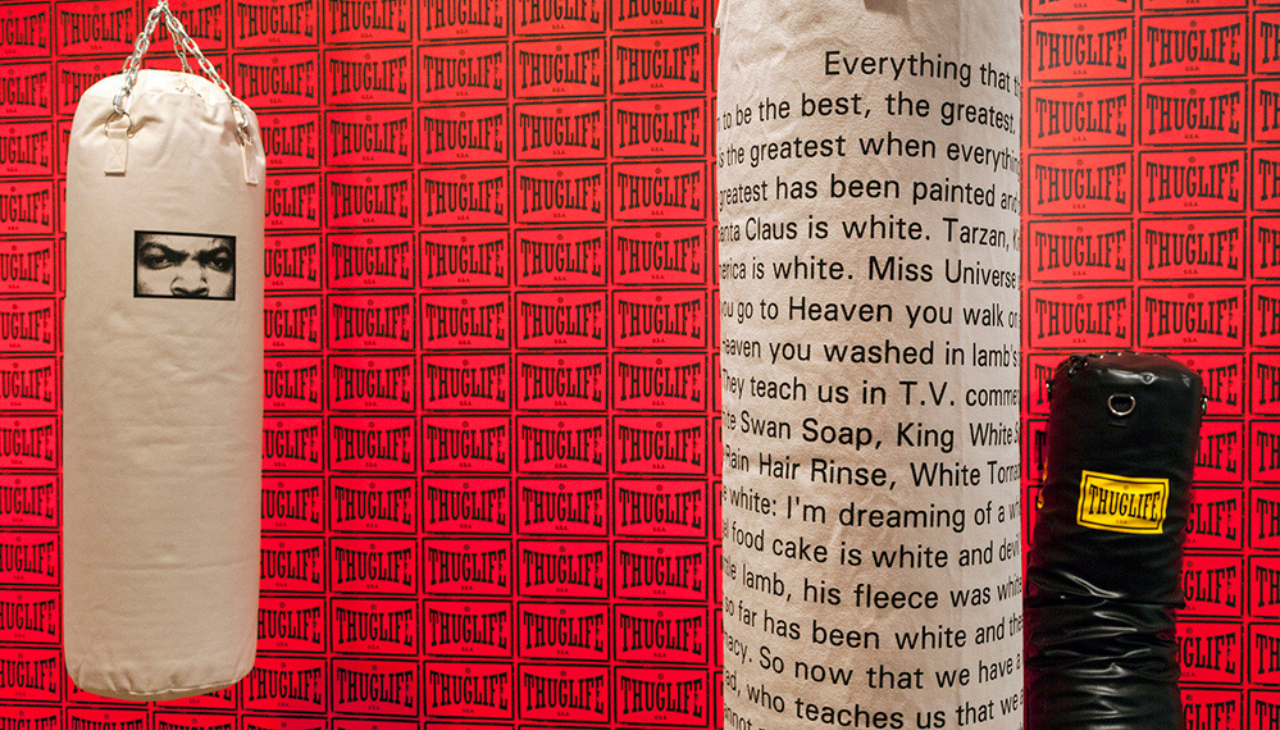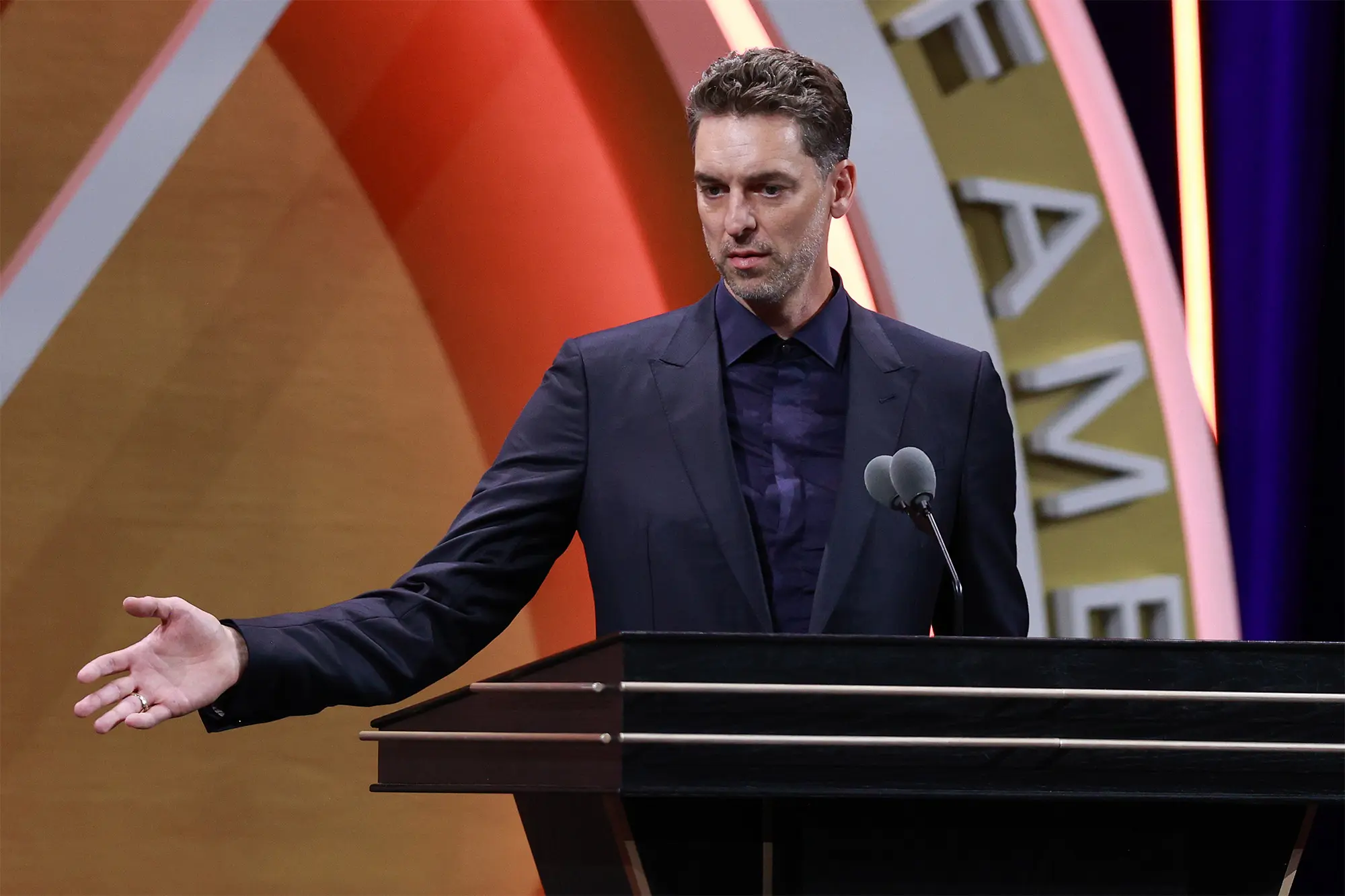
Sound as an artistic inspiration
The Fabric Workshop and Museum presents ‘Sonic Presence (or Absence): Sound in Contemporary Art,’ an exhibition that explore and engage with sound.
The Fabric Workshop and Museum (FWM) just announced Sonic Presence (or Absence): Sound in Contemporary Art, an exhibition featuring 22 artists who explore and engage with sound. Some artworks incorporate actual sound while others encourage viewers to rely upon their own experiences and memories of sound to interpret the works. Curated by Alec Unkovic, the exhibition is on view June 23, 2023 to January 7, 2024.
The artists that are part of the exhibition are: Terry Adkins, Janine Antoni, Moe Brooker, Nick Cave, Lenka Clayton, Kevin Cooley, Peter Edwards, Guillermo Galindo, Ann Hamilton, Christine Sun Kim, Phillip Andrew Lewis, Glenn Ligon, Thomas Mader, Jason Moran, Robert Morris, Stephen Petronio, Raúl Romero, Yinka Shonibare, Patrick Siler, Kiki Smith, Lenore Tawney, and Mika Tajima.
Throughout FWM history, artists-in-residence have used sound as the focus or as a conceptual component of their residencies. These projects have often explored how to offer a direct translation of sound, capture an indirect representation of its energy and cultural forms, or inspire an audible response from an audience. As the title of the exhibition suggests, the artworks presented demonstrate the notion of a “sonic presence,” a palpable connection between the visual and the aural. Featuring works from the museum’s collection alongside a selection of loaned works, Sonic Presence invites visitors to explore the resonant themes of sound in visual arts, be it implied, imagined, absent, or realized.
As part of residencies that often focus on material exploration, some artists at FWM have turned to visually translating the experience of sound, performance, or their cultural reverberations.
For Yinka Shonibare, creating his Afrofuturist sculpture Space Walk (2002), which consists of two life-size astronaut figures suspended midair in the gallery suggesting the weightlessness of soundless space, involved scouring Philadelphia’s South Street neighborhood for vinyl records. Visual iconography of the 70s Philly Sound movement and then-emerging local artist Jill Scott came to serve as the inspiration for four custom batik textile designs that clothe the figures with the cultural energy of Black musical artists. The notion of clothing oneself in sound is explored further with Nick Cave’s Soundsuit, with its vibrant armor of stuffed animals towering above a pair of colorful tight-wearing legs, and with Lenore Tawney’s Cloud Garment, in which silkscreened sheet music and the evocation of atmospheric calm merge together to form a protectively serene garment.
In his 2010 print on silk, Listen with your eyes ttgg, the late Philadelphia artist Moe Brooker, a preacher’s son, invites viewers to conjure the sounds of his childhood in the church through its vivid colors and abstracted forms, while Patrick Siler’s 1987 screenprinted Blaster captures a scene of listeners captivated by a classic boombox. Conversely, Peter Edwards’ interactive sculpture Specter, which consists of clusters of illuminated orbs descending from the ceiling, visibly responds to the sounds of visitors.
Instruments act as a recurring theme throughout Sonic Presence as both material and form. The exhibition includes two sculptures from Terry Adkins’ Aviarium series, the last body of work by the late Philadelphia artist, which translate wave vectors of bird vocalization into a monumental scale, using cymbals and aluminum rods to capture song in purely sculptural form. Recent works by Jason Moran vividly capture the traces of a performance, with the artist exploring the residue of music-making by placing paper on the piano keys and using saturated pigment.
Place becomes the inspiration in Sonic Border for Mexican composer and artist Guillermo Galindo, who crafted instruments from discarded items bearing the evidence of migration, which he collected on his travels along the Mexican-American border. Paired with recordings of Galindo’s original score, these artifacts resonate with the complexity and lived experiences of immigration.
Making its debut is The Sound of the Sea, a new collaborative work by former Artist-in-Residence Lenka Clayton with Phillip Andrew Lewis that explores the process of Foley artists, who utilize props to recreate everyday sound effects in films, radio, or television; for this work, Clayton and Lewis have collected and recontextualized unexpected objects used to create the sound of the ocean.
RELATED CONTENT
Glenn Ligon’s Skin Tight, made up of eight punching bags and graphic wallpaper, reflects on the notion of Black masculinity and the Black body as site and object. Adorned with the images of rappers such as Ice Cube and texts from Muhammad Ali, the installation confronts the visitor with the impact and implications of a punching bag’s activation.
Sonic Presence also explores the conceptual notion of the sound of an artwork’s own making. During her FWM residency, Mika Tajima began her ongoing Negative Entropy series, consisting of woven acoustic portraits that act as images of the condition of their production; having recorded industrial spaces employing Jacquard looms, the artist visually translated those recordings into spectrograms that were then produced into Jacquard-woven designs on some of those same looms. In a work that predates his residency at FWM, Robert Morris’ Box with the Sound of Its Own Making (1961) presents an ordinary wooden box that emits a recording of its own construction, complete with sawing and hammering as well as pauses and sounds of activity less traditionally associated with progress.
Lenka Clayton’s ongoing Typewriter Drawing series explores both cacophony and absence through mark-making. Phillip Andrew Lewis and Kevin Cooley’s Harmony of the Spheres blends performance and relic. Their destruction of one-thousand silent vinyl records inspired numerous works, including a final edition of one-hundred LP records made entirely from the ruins. When re-pressed, the new vinyls— available for visitors to listen to—are inscribed with the sounds of the buzzing factory as it works to press the silent record as well as the sounds of the records’ initial destruction when thrown against the wall.
The exhibition also explores communication in its myriad forms: Ann Hamilton’s 1993 editioned collar work, Untitled, explores the relationship between the body and language with an alphabet woven from horsehair. Over a dozen editions of Kiki Smith’s Singing Siren, an artist multiple made with FWM, form a chorus-in-waiting of mythological creatures whose song is simultaneously alluring and deadly. A prototype from Janine Antoni and Stephen Petronio’s 2016 work Swallow offers custom seating that engenders connection and dialogue.
A two-film work by Christine Sun Kim and Thomas Mader continues the exhibition’s focus on sound and communication. In Tables and Windows, the artists intertwine their bodies much like a game of collaborative improv, working together to negotiate their different skill sets as a native American Sign Language (ASL) speaker and an ASL learner. Another work on loan looks beyond human communication. Philadelphia artist Raúl Romero’s sculptural installation Music for plants, by plants merges speakers, sculpture, and a listening station to explore the role of the sculpture’s plant as recipient or maker of subsonic frequencies. Wielding unexpected humor, these works interrogate the perceived limitations of language and sound, inviting visitors to join the artists in search of their untapped potential.
Taken together, the works by the 22 artists in Sonic Presence offer numerous ways that contemporary art can both engage with ideas of sound and offer possibilities in bridging explorations between the visual and the aural.
Sonic Presence (or Absence): Sound in Contemporary Art is organized by former FWM Exhibitions Manager Unkovic.











LEAVE A COMMENT:
Join the discussion! Leave a comment.